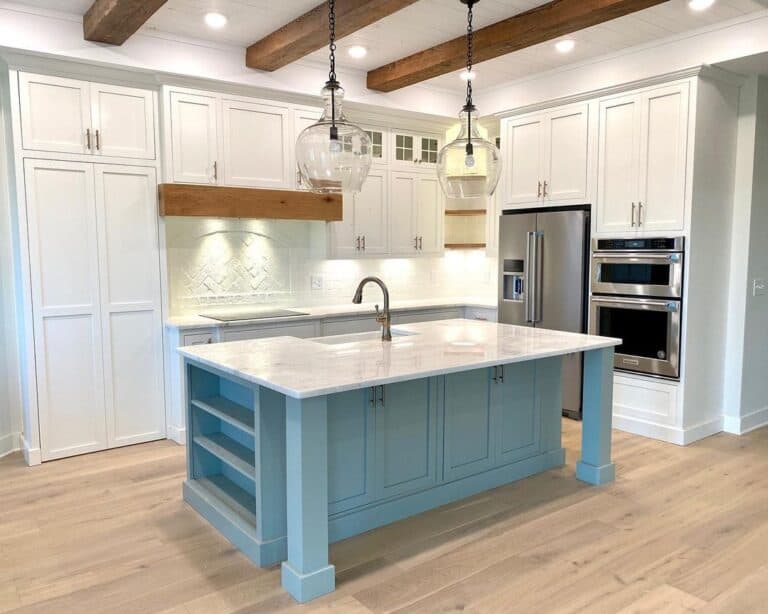Boost Capability and Design Using Quality Legs For Kitchen Island
Boost Capability and Design Using Quality Legs For Kitchen Island
Blog Article
Crucial Factors to Take Into Consideration When Choosing Legs For Cooking Area Island
Selecting the suitable legs for a cooking area island entails a cautious evaluation of several factors that can considerably influence both performance and aesthetic allure. As we discover these elements, it becomes clear that each choice can have significant ramifications for the total cooking area experience.
Material Options
When selecting legs for a kitchen area island, comprehending the various material choices is essential for achieving both aesthetic appeal and architectural stability (Legs For Kitchen Island). The choice of product substantially affects not only the sturdiness of the island yet likewise its overall layout and functionality
Steel legs, often made from stainless steel or wrought iron, contribute a modern-day and industrial feeling while ensuring resilience and stability. These products are resistant to wear and can support substantial weight, making them perfect for larger islands.
One more option is crafted products, like MDF or plywood, which can be a lot more cost-effective while still providing a variety of coatings. They may not supply the very same level of security as solid timber or metal. Legs For Kitchen Island. Finally, materials such as acrylic or glass can develop a modern look, though they may require added support to make sure stability.
Ultimately, the selection of product for kitchen area island legs need to align with the preferred capability and the general style of the cooking area.
Style and Style

When thinking about style, the shape and surface of the legs are crucial. Conical legs can offer a sense of agility and beauty, while thicker, extra durable legs can share stamina and security. Furthermore, the coating-- be it painted, tarnished, or natural-- should enhance the cabinetry and kitchen counter products to create a unified look.
Additionally, the layout of the legs can likewise mirror individual taste. Custom-made or attractive legs, such as those featuring intricate carvings or distinct geometric forms, can function as focal points, adding character and character to the cooking area. Ultimately, the best option will certainly not only boost capability but also raise the visual allure, making the kitchen island a standout function of the home.
Height Factors To Consider
Picking the appropriate elevation for kitchen area island legs is important, as it directly influences both performance and convenience. The common height for a cooking area island normally ranges from 36 to 42 inches, straightening with typical kitchen counter heights. A 36-inch elevation is optimal for cooking and food preparation, enabling comfy use of kitchen area appliances and devices. Conversely, an elevation of 42 inches is often liked for islands intended for bar seats, suiting taller stools and supplying a casual eating experience.

It is also vital to make up users' preferences and elevations. Tailoring the height can guarantee a comfy experience for all relative, making the kitchen area island a much more delightful and practical area.
Weight Support
Making certain sufficient weight assistance for kitchen area island legs is vital for both security and functionality. The kitchen area island frequently offers multiple objectives, including cooking, dining, and extra storage space, necessitating a durable support structure. When picking legs, it is essential to take into consideration the overall weight ability required based on the island's planned use and the materials that will certainly be put on it.
The option of product for the legs plays a significant function in their weight-bearing capacities. Solid wood, official website steel, and sturdy composites normally give superior stamina contrasted to lighter products. Additionally, the style of the legs-- whether they are right, tapered, or have a pedestal kind-- can influence their capability to disperse weight properly across the structure.
Always consult the manufacturer's specifications regarding load restrictions to make certain that the legs can maintain the desired weight without jeopardizing security. In summary, selecting kitchen island legs with adequate weight assistance is crucial for developing a functional and safe cooking area.
Installment and Maintenance
Correct installment and maintenance of kitchen island legs are critical for ensuring long life and stability. To begin, it is vital to adhere to the producer's guidelines throughout setup. This frequently entails protecting the legs to the island base making use of proper fasteners, making certain that the legs are level and straightened. Using a level device can help protect against wobbling and enhance the general aesthetic allure of the kitchen island.
When mounted, routine maintenance is necessary to preserve the honesty and appearance of the legs - Legs For Kitchen Island. For wooden legs, periodic cleaning with a damp fabric and application of ideal wood gloss can prevent wetness damages and keep their finish. Metal legs might require a gentle cleansing remedy to remove grease and crud, followed by a dry fabric to avoid rust development
Additionally, examine the legs consistently for signs of wear official website or damage, such as cracks or loose joints. Tightening screws or bolts as needed can also prolong the lifespan of the legs. By adhering to these installation and maintenance practices, property owners can guarantee that their kitchen area island stays durable and visually appealing for many years to find.
Final Thought

Aesthetic coherence is critical in choosing the design and layout of legs for a cooking area island, as these elements greatly influence the general atmosphere of the area. Conical legs can give a feeling of agility and elegance, while thicker, more robust legs can communicate stamina and security.Selecting the ideal elevation for cooking area island legs is critical, as it straight influences both functionality and convenience. In recap, picking cooking area island legs with ample weight assistance is crucial for developing a practical and risk-free culinary space.
In conclusion, picking legs for a cooking area island demands cautious factor to consider of different elements, including product alternatives, design, height, weight support, and installment.
Report this page